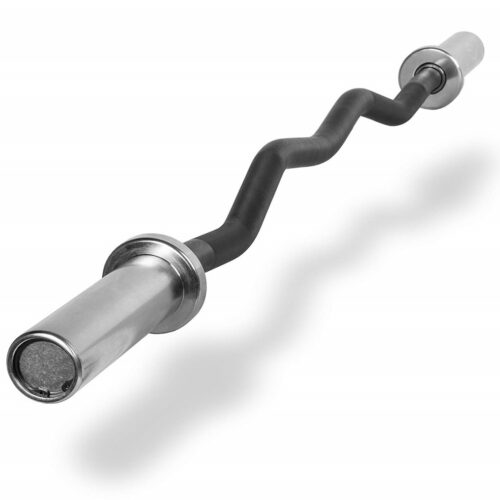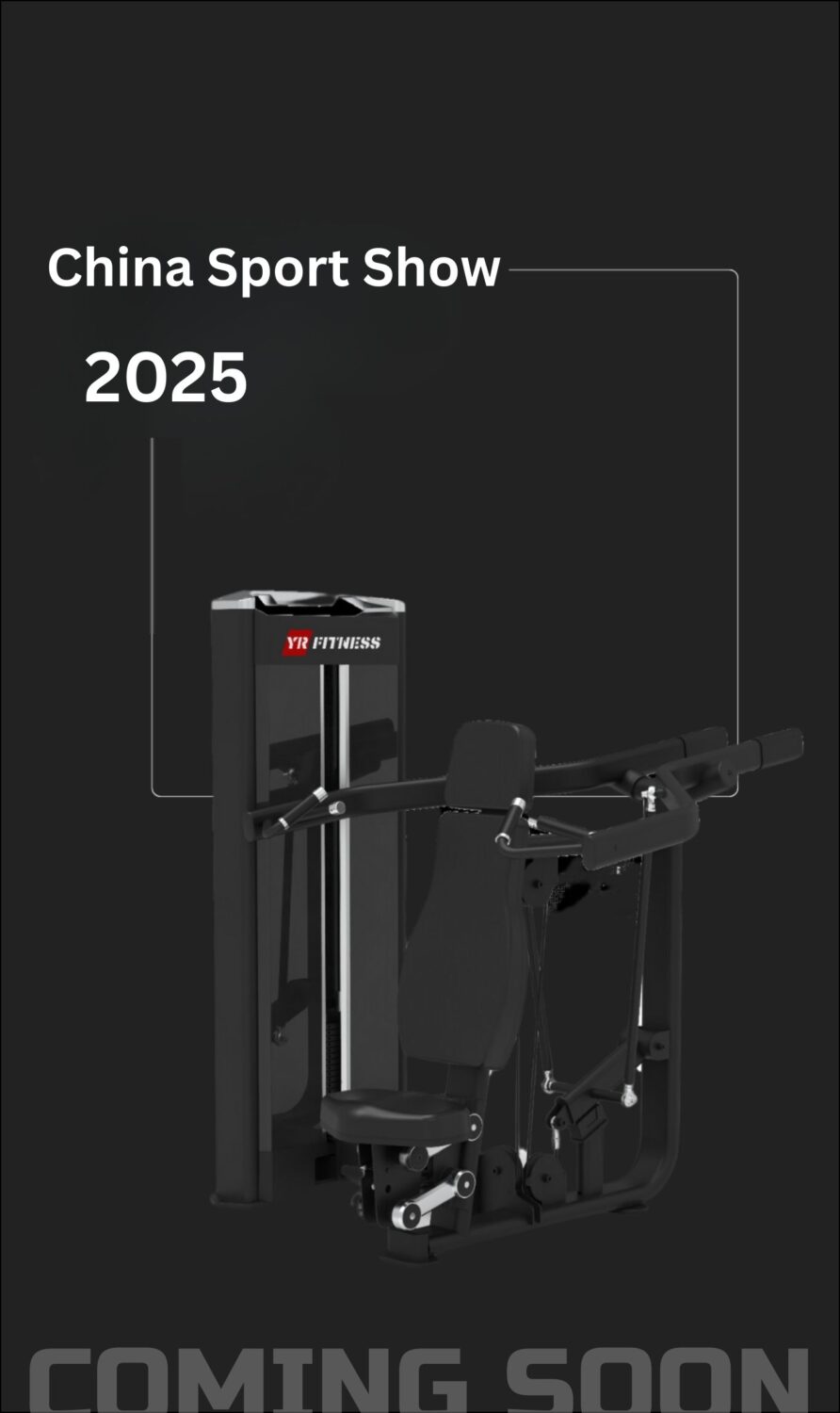Your Expert Commercial Barbell Manufacturer In China
- Provides necessary patents & certificates
- The excellent customer-oriented sales team that will support you all the time
- Competitive balance between price, quality, and brand
- No maintenance needed
- Build upper body mass by incorporating into your strength training routine
- Great for total body toning, strengthening, and muscle building
- Allows to quickly add resistance and load a wide variety of exercises
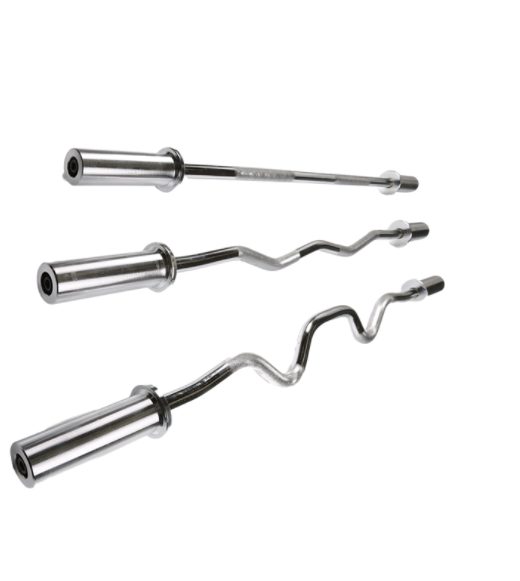
Commercial Barbell Types
Products We Have for You
Showing 19–19 of 19 results

Factory
Over 95% clients choose to cooperate with Yanre Fitness, after visiting our factory and trying our commercial gym equipment personally.

Patents
Our gym equipment meet ISO 20957 standard, with over 40 patents (Utility Model Patents & Appearance Design Patents)
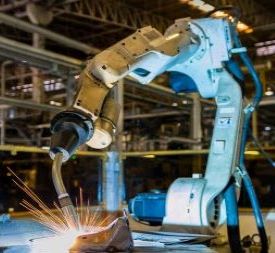
R&D Invest
For more than 20 years, Yanre Fitness invested over 8 million USD for technology development.
Commercial Barbell – Definitive FAQ Guide
In the fitness industry, a barbell is a must to weight training. Manufacturers produce various commercial bars and weights to meet all kinds of needs like size, shape, function, and common use.
But with so many choices, it can be hard to know which ones are right for you. If you have any questions about which type is right for you, consult our FAQ guide.
Table of Contents
- The Commercial Barbell Structure
- Commercial Barbell Types
- The main difference between Standard Bar and Deadlift Bar
- The main difference between Straight Barbell and Curl
- Commercial Barbell Size
- How much weight does an empty barbell have?
- Commercial Barbells Diameters
- How much is the highest amount of commercial barbells can hold?
- Barbell Sleeves Features
- Does the commercial barbell collar spin?
- The main difference between Bearings and Bushing
- How can the knurling indicate barbells types?
- How important is the knurling depth on barbells?
- Do whip essential to the barbell?
- What are the commercial barbells made from?
- Commercial Barbells Finishing Types
- Definition of Tensile Strength
- Do commercial barbells has rust-resistant?
- Do commercial barbells is fragile?
- Do the barbell diameter match for all of the weight plates types?
- Is it secure to leave the weight placed on the barbell?
- Things to consider while purchasing commercial barbells
- Can commercial barbells be customized?
- Final Words
The Commercial Barbell Structure
Commercial barbells are made up of four major components. These may vary in characteristics and dimension, but for the most part, they all are the same despite what type they are :
- Shaft
The barbell shaft is a middle piece that describes the length.
- Sleeves
There are two sleeves at the end of a shaft, the place you put the weights plates.
- Collar
This thick, sturdy part helps prevent the plates from moving closer to the shaft. It is integrated with both sleeves.
- Knurling
The crosshatch pattern at the shaft and not separated from each other. The function of this design feature is to help you keep a firm grip on your bar during any situation and take advantage of its high traction surface area when applied with pressure.
However, there are several premium or special barbells that give additional parts to help you compete. These include :
- Spinning Sleeves
The spinning sleeves allow you to move around a spinning axis without dropping your grip quickly.
- Bearings
It is hidden between shafts and sleeves. It is allowing sleeves to rotate on their own from the shaft. Without this assistance, their functionality would most likely decrease, as seen during training each day when athletes drop them on accident.
- Fastener
It doesn’t let the sleeve slip off from the bar.
- End caps
It is needed to shut the sleeve. It is commonly made of plastic or metal covers on the sleeves’ end to attach to the bar.
The structure of a good-quality barbell can be complex but should include the components mentioned above for convenient and safe use.

Figure 1 Commercial barbell structure
Commercial Barbell Types
The barbells types can be vary depending on weight, function, size, and shape. For you to understand easier, here is the breakdown of each :
Barbells by Form
- Straight bars
- Curl bars
- Trap bars
- Swiss bars
Barbells by User
- Men
- Women
- Juniors
Barbells by Function
- Powerlifting bars
- Olympic bars
- Deadlifting bar
- Squat bar
- Multi-purpose bar
Many different types of commercial bars offer various complex routines. Owners of a commercial fitness center need to have more barbell types for bodybuilding routines full coverage.

Figure 2 Curl and straight barbell
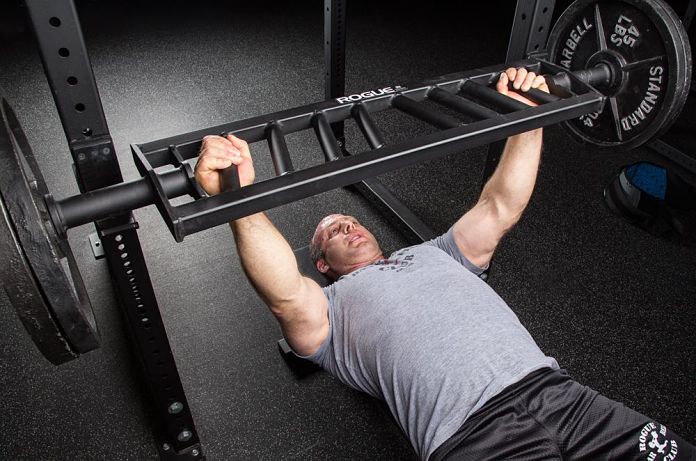
Figure 3 The swiss bar
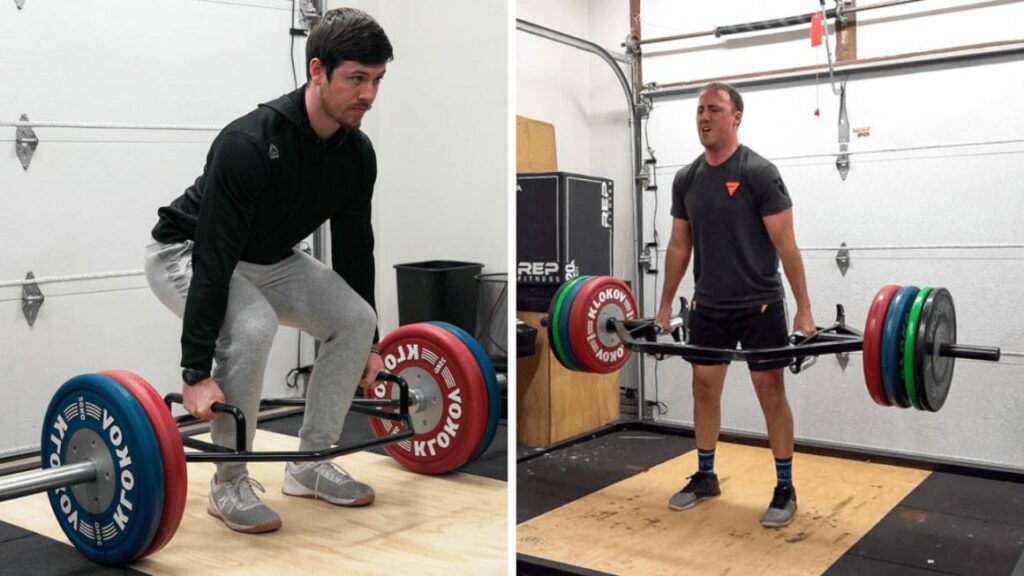
Figure 4 The trap bar
The main difference between Standard Bar and Deadlift Bar
The three differences between them are knurling, diameter, and whip. Deadlifts bend more easily than the standard bar does since they have an extra amount of whip. Standard bars, meanwhile, typically feature center knurling for better control over heavier lifts.
The deadlift bar is thinner and longer than the power bars. Their diameter, 27 mm, helps with the effect of whippy by moving the weight farther away from the bar center.
It has no knurling in the middle for your grip to be better on an aggressive outer coating that cuts into hands more effectively when lifting heavy weights off ground level to above head height (deadlifting).
Standard bars have a shorter and more stable 29 mm diameter. They are less likely to whip while you’re lifting them, which provides a powerful center knurl on an excellent grip.
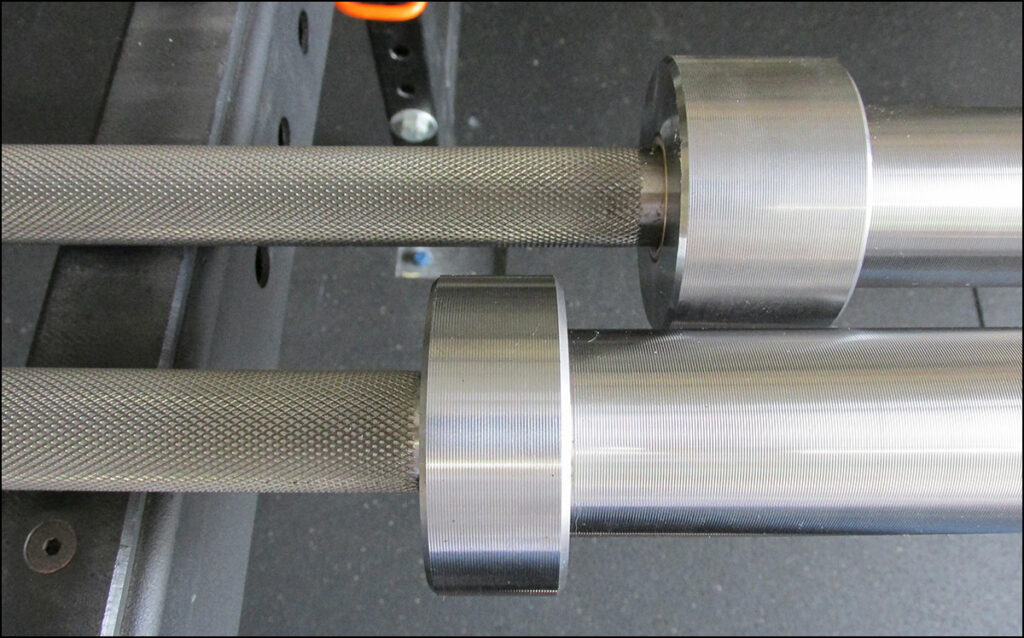
Figure 5 Standard bar vs deadlift bar
The main difference between Straight Barbell and Curl
Comfort and ergonomics are the keys. While the straight bar lays more pressure on your wrists, which can lead to pain when lifting heavier weights, a curl bar spreads out that pressure so you can lift even heavier weights without feeling any discomfort at all.
Straight bars are heavier and have weights positioning towards the end. It causes torque to your wrists when you complete a lift, leading to larger wrist pain or supination during training.
Many athletes use straight bars for building biceps muscles. They take preventive measures by wearing protective gear like wristbands while lifting heavy items that could cause injury if done without proper equipment on hand.
Curl bars are lighter and shorter than the straight bar, allowing loading more weight. During training with it, you will feel better gripping it tight due to its lack of discomfort on your wrists. But both of them are effective in providing muscle-building exercise, so use whichever feels most comfortable to you during gym sessions.

Figure 6 Curl vs straight bar
Commercial Barbell Size
Depending on the purpose, the bar can be 1200-2400mm in length, with 2200 being standard commercial sizes worldwide used primarily for common training purposes, while specialty or EZ curl bars come in various lengths as well.
The essential thing about measuring out height when choosing a new gym membership is getting one that fits correctly. Make sure there are no gaps between weights if necessary.
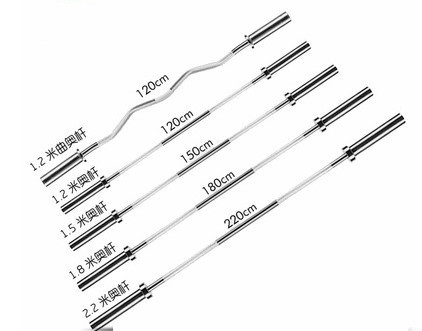
Figure 7 Commercial barbells size
How much weight does an empty barbell have?
The amount of weight defined by its use :
- Barbells for men weight 20 kg
- Barbells for women weight 15 kg
- Barbells for children/youth weigh from 2,5 kg to a maximum of 10 kg
Commercial Barbells Diameters
Usually, the bars vary in width from 22mm to 29mm.

Figure 8 Barbells diameters
How much is the highest amount of commercial barbells can hold?
The average commercial bar could hold a maximum load of 100 kg. However, when you go over this load limit, it may damage your barbell.
Meanwhile, Olympic bars are built with thicker steel and have the capability for heavier loads. They can hold a maximum of 500 kg without sustaining permanent damages.
Barbell Sleeves Features
There are at least three barbell sleeve features that are most important. They are diameter, finish, and length.
Diameter
The sleeve diameter is usually 50mm because most weight plates have a center hole that is also 50 mm.
Length
The sleeve length defines how many plates you could load and how much weight you could lift. There are many different lengths from 100 to 445mm.
Short sleeves are great for beginners and those who don’t want to risk injury. However, if you are more serious about lifting weights or bodybuilding, a sleeve will be better.
Finish
The sleeves come in a range of finishes, such as black zinc, white zinc, or chrome. This detail has two purposes protective and aesthetic. It looks good while also preventing oxidation.
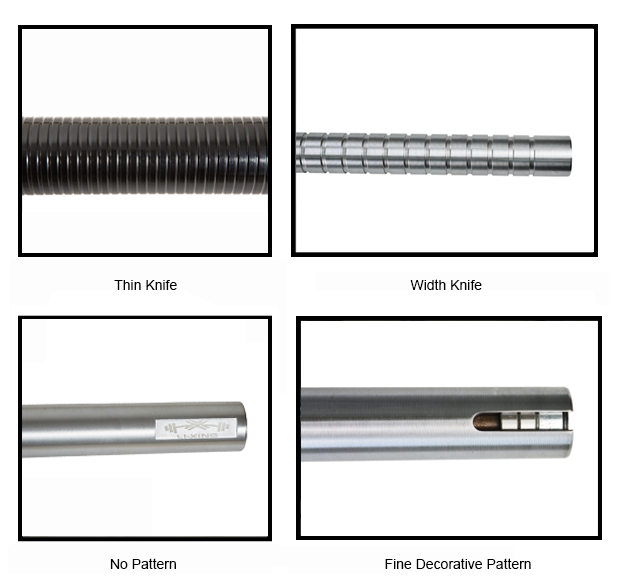
Figure 9 Finishing types of barbell sleeves
Does the commercial barbell collar spin?
Yes, it is. It spins as you lift. It is meant to help lifters lift by spinning throughout it, making for an easier and more efficient workout.
The main difference between Bearings and Bushing
The only difference between both of them is their construction. Bushings are simpler in design and don’t have any moving parts, while bearings have ball or needle-shaped rollers that help them move smoothly.
Both are needed for the bar because they help in the process of lifting and prevent friction damage to the bar.
The bushing is often made from copper or brass rings. It sits between the outer and inner sleeves. The function is to promote smooth rotation.
The bearings provide a silent and smooth rotation that is mounted among the sleeve and the bar. It has three types :
- Needle bearings
- Ball bearings
- Thrust bearings
When choosing a barbell, it is essential to consider the type of bearings because the number of bearings usually reflects the commercial barbell’s quality. With needle bearings combined with bushings, you can have an optimal experience when lifting weights.
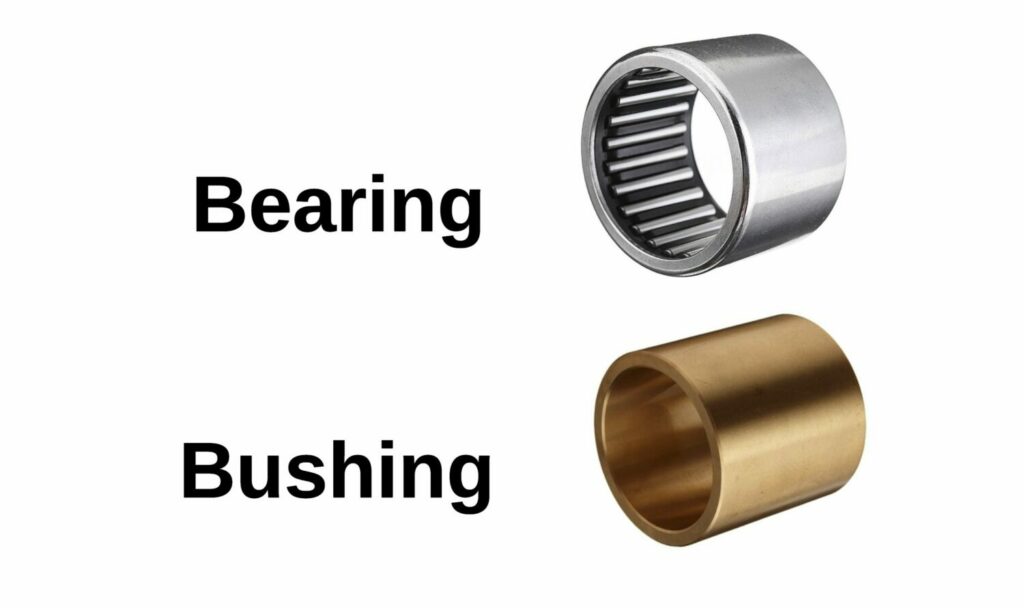
Figure 10 Difference between bearings and bushing
How can the knurling indicate barbells types?
The cross pattern of knurling on the shaft is a way to provide grip during heavy lifting. The difference in patterns can tell you what type of barbell it might be, and they are :
- Straight design
- Angular design
- Diamond design
Olympic bars are a staple in any gym. They are the perfect bar to train with their small rings and centered knurling where hands usually grip. The ring’s support is 36 inches apart from each other.
Powerlifting bars provide a center knurling that helps to grip the back of the bar during squats. The rings are 32inch apart and help you see where you should place your hands.
The markings on the ground at commercial gyms and fitness centers are helpful to show where you should take a grip. This tool helps consistency in your lifts, workouts, etc.
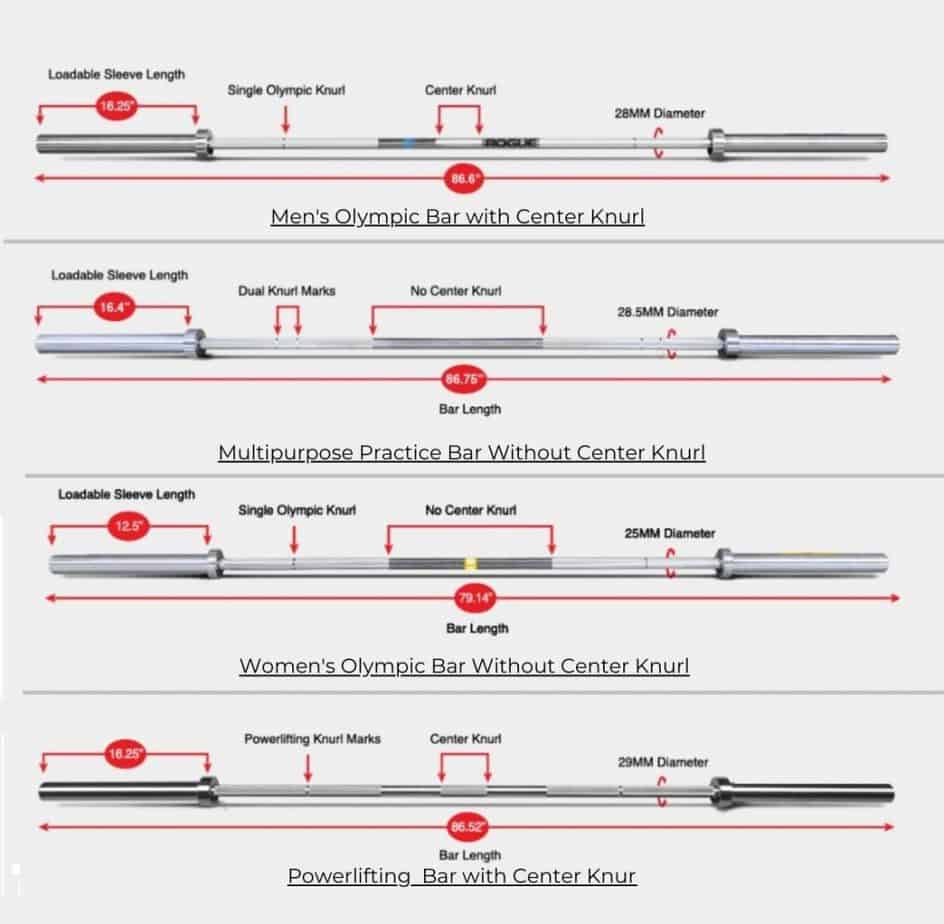
Figure 11 The barbell knurling
How important is the knurling depth on barbells?
The knurling depth ensures a solid hold on the shaft. Having too much knurling is that it can cut into your skin, but not enough knurling may end up making you let go too soon.
The optimal weightlifting bar is created with a balance of negative and positive knurling. The owner of a commercial gym usually chooses neutral knurling over special knurls. The goal of this mix in the design is to do weight exercises with no problems or inconvenience.
Nonetheless, hardcore powerlifters should use an aggressive barbell, and a complete gym center will provide that.
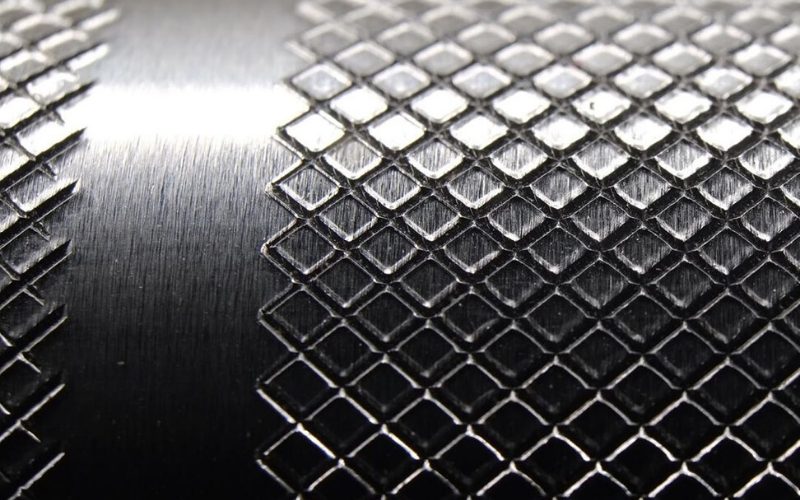
Figure 12 Barbell knurling depth
Do whip essential to the barbell?
Yes, it is. Barbel whips are essential to lifters and athletes with specific force procedures because you can use them for strength or power.
The bar material is an important factor in deciding how much the whip will have, as different materials offer varying levels of that characteristic.
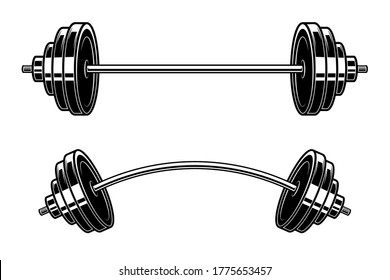
Figure 13 The barbell whip
What are the commercial barbells made from?
It is a solid steel rod, usually stainless or carbon steel, with weight plates on either end. The material and quality determine the strength and durability that will best suit your needs for fitness training in any gym center.
Yanre Fitness has been supplying high-end quality bars to gyms since it was founded over two decades ago, providing durable products suitable for most fitness centers and gyms.
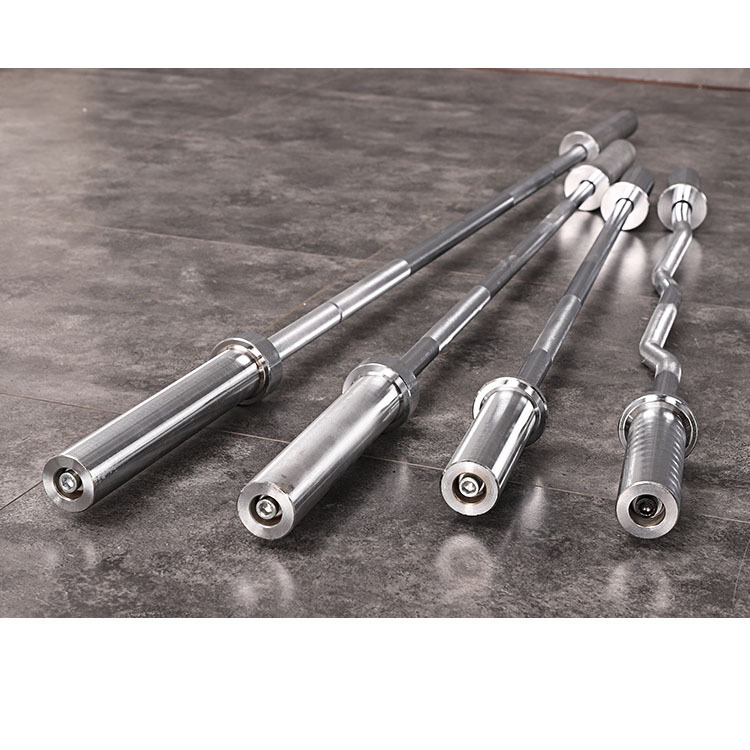
Figure 14 The stainless steel of commercial barbell
Commercial Barbells Finishing Types
Many different finishes can be applied to the shafts and sleeves of a barbell. It will give you a variety of looks and feels. The most general finishes for bars are :
- Bare steel
- Black oxidation
- Black zinc
- Hard chrome
- Decorative chrome
- Bright zinc
- Cerakote
Your barbells are too essential to settle for anything less than the best. Yanre Fitness offers superior finishing treatment, so your bars meet competition standards and ensure you have quality equipment in your gyms.

Figure 15 Sleeve and barbell finish
Definition of Tensile Strength
The breaking point or tensile strength of a barbell is measured in pounds by the square inch. It is essential to know that the high-end manufacturers will produce it at 180.000 PSI and above.
Do commercial barbells has rust-resistant?
Commercial grade barbells surface has typically treated with spray or coating substances to prevent oxidation and rust. Bare steel material is more susceptible to corrosion, but other coatings like cerakote or chrome have less susceptible to the elements.
When purchasing your commercial-grade barbell, ensure you ask about surface treatments meant for preventing damage caused by time and use.
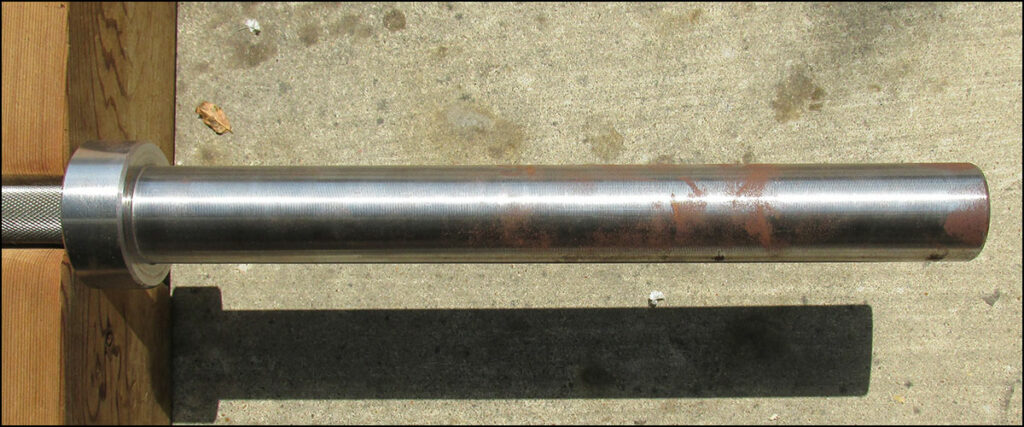
Figure 16 A rusted barbell
Do commercial barbells is fragile?
In general, barbells can break, warp, and bend. Commercial bars generally tend to snap or bow when under tension rather than break themselves in half based on a specific weight threshold (about 264 pounds or 120 kg).
As the weights get heavier, 300kg or more (700lbs), you will see much greater bends on your bar. If you want more security against snapping under heavy loads, adding a snap collar on both ends before loading up the bar.
However, poor quality brands may cause damage instead of preventing it because their bars easily warp and have sharp edges which cut through any gloves worn while using them often enough. Your best bet would be buying high-end commercial-grade models from reputable manufacturers.
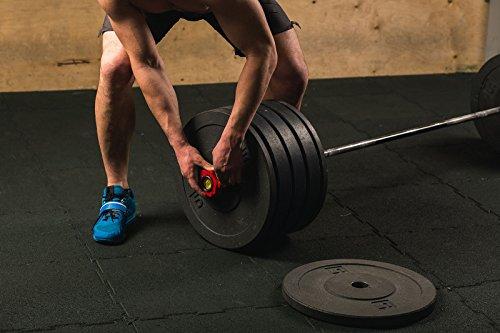
Figure 17 The snap locking
Do the barbell diameter match for all of the weight plates types?
No, it isn’t. The barbell is not a one-size-fits-all. The sleeve’s diameter should correspond with the weight plate’s hole size so that you can insert it easily and accurately. It is typically 25mm or 50mm, respectively.
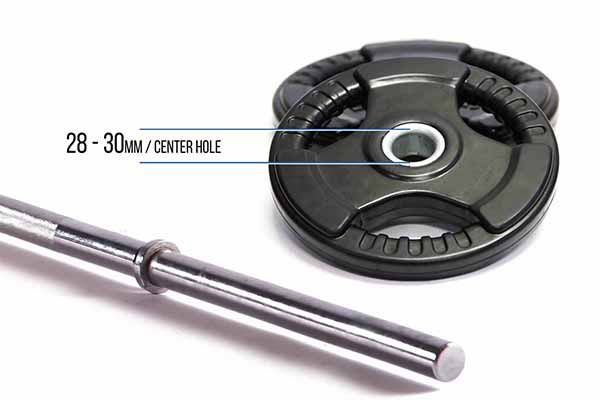
Figure 18 Standard weights and barbell
Is it secure to leave the weight placed on the barbell?
Yes, it is. The barbells can be left stored in the rack. However, placing heavyweights on a bar over time may cause it to bend.
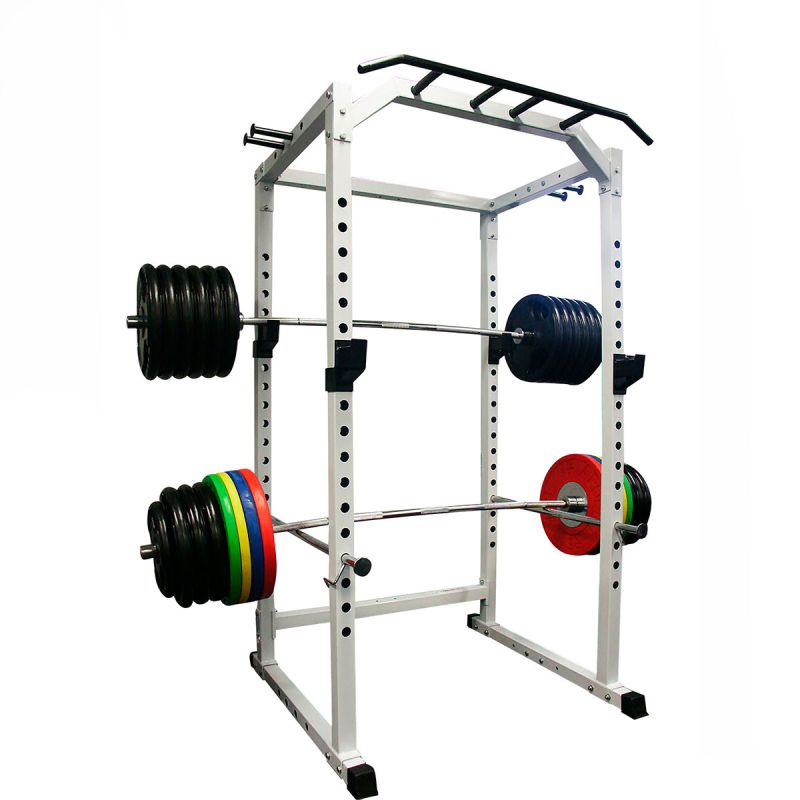
Figure 19 Stored barbells on the rack
Things to consider while purchasing commercial barbells
Buying gym equipment from manufacturers is an absolute requirement for any business owner in this industry. But you have to consider it before purchasing it like diameter, knurling, whip, and tensile strength.
- Diameter: determines the types of exercise of the bar
- Knurling: indicates differences in the approach of lifts
- Whip: indicates the level of flexibility
- Tensile strength: breaking point rated at 190.000 PSI or above
Commercial gym owners and personal trainers alike should read the article below from Yanre Fitness for buying tips on barbells :
Can commercial barbells be customized?
Yes, it can. Custom barbells cause a great image on clients, and Yanre Fitness is an expert in custom-made equipment, including customized bars with logos for any client’s needs.
For example, you can place the logo at different locations near its tail end or just below its collar.
Final Words
Have all your questions about barbells been answered? I hope so, and you have no doubt why you should have it at your gym.
Contact Yanre sales team right now if you have any new queries. Yanre Fitness will prepare your order with the utmost care.
Recommended Reading: The Ultimate Barbell Buying Guide for Gym Owners

